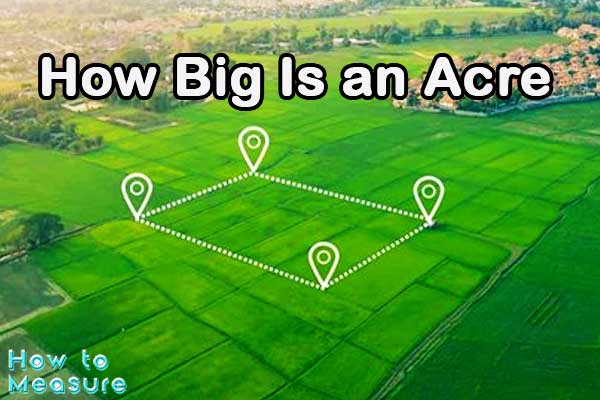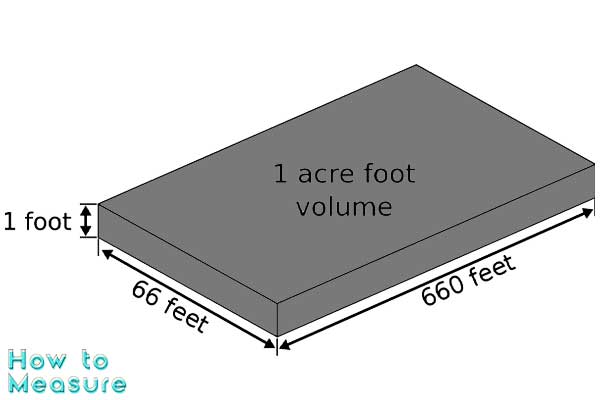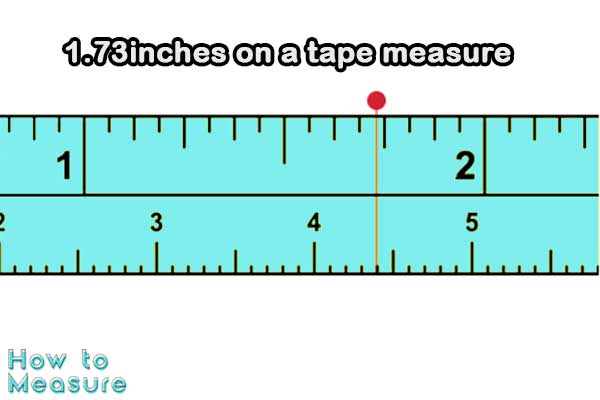Have you ever wondered how big an acre is? Whether you’re interested in real estate, agriculture, or land management, understanding the dimensions of an acre is crucial. In this article, we will delve into an acre’s history, measurement, and practical applications, providing a comprehensive understanding of this unit of land measurement.
What Is an Acre?
An acre is a unit of land measurement widely used in countries such as the United States, Canada, and the United Kingdom. It represents a standardized area of land, specifically 43,560 square feet or approximately 4,047 square meters. The acre is derived from the Old English word “æcer,” which refers to cultivated land or an open field.
An acre can be visualized by imagining a rectangular plot of land, approximately one football field in size, excluding the end zones. It is also comparable to about 75% of a soccer field or slightly smaller than a typical city block. The acre is commonly utilized in various industries, including agriculture, real estate, land management, and surveying. It serves as an integral unit of measurement for determining land value, assessing crop yields, planning irrigation systems, and facilitating property transactions. While the metric system is more prevalent in many parts of the world, the acre remains a significant unit of land measurement in regions where historical conventions persist.
Historical Context of the Acre
The acre’s historical context as a measurement unit is rooted in centuries of agricultural practices and land division. The concept of measuring land in terms of its area dates back to ancient civilizations, including the Egyptians and the Mesopotamians, who used rudimentary methods such as measuring the length of a rope or using body parts as references.
The term “acre” itself finds its origins in medieval England. During the Middle Ages, the land was often divided into strips for cultivation, and an acre referred to the area of land that a yoke of oxen could plow in a day. These strips were typically long and narrow, providing each farmer with a plot of land for their crops.
Over time, the dimensions of an acre varied in different regions, leading to inconsistencies and confusion. The need for standardization became apparent as land transactions and property assessments became commonplace. Efforts were made to establish a standardized acre measurement, eventually leading to the International Yard and Pound Agreement of 1959, defining the acre as 4,046.8564224 square meters internationally.
The historical significance of the acre lies in its continued usage despite the introduction of the metric system. Many countries, especially those with agricultural traditions, continue to rely on the acre as a standard unit of land measurement. It links to the past, reflecting the historical importance of agriculture and land ownership in shaping societies and economies.
The Size of an Acre
The size of an acre is a significant aspect of understanding its practical implications in land measurement. An acre is equivalent to 43,560 square feet or approximately 4,047 square meters. To provide further context, it helps to visualize the size of an acre of familiar landmarks or objects.
In terms of square footage, an acre is roughly the size of a football field, excluding the end zones. It is also comparable to approximately 75% of a soccer field or slightly smaller than a typical city block. This gives a tangible sense of the scale of an acre of recreational spaces or urban areas.
When considering the metric system, an acre is approximately equal to 4,047 square meters. To visualize this, one can imagine a square plot of land with each side measuring approximately 63.6 meters. This area is similar to the size of about half a standard Olympic swimming pool or slightly larger than a tennis court.
Understanding the size of an acre is crucial in various industries and fields. It helps determine land values, plan agricultural operations, assess crop yields, and establish zoning regulations. Despite the prevalence of the metric system in many countries, the acre remains an important unit of measurement in regions where historical conventions persist.
Visualizing an Acre
Visualizing an acre can help provide a practical understanding of its size and implications in terms of land measurement. While the exact shape of an acre can vary, it is commonly represented as a rectangular plot of land.
To visualize an acre, one can imagine a plot of land roughly the size of an American football field, excluding the end zones. This gives a tangible sense of the scale, as football fields are familiar to many people. It helps to envision the width of the field, approximately 53.3 yards (or 160 feet), and the length, 100 yards (or 300 feet).
Another comparison is that an acre is approximately 75% the size of a standard soccer field. This allows for a visual understanding of the area, with soccer fields typically measuring around 110-120 yards in length and 70-80 yards in width.
In an urban context, an acre can be visualized as slightly smaller than a typical city block. City blocks can vary in size, but on average, they are often around 200 feet by 200 feet or 60 meters by 60 meters. An acre is roughly 75% of that size, providing a sense of the land area it represents.
These visualizations serve as a starting point for understanding the size of an acre. It is important to note that an acre’s actual shape and dimensions can differ based on land surveys, irregular boundaries, or specific land divisions.
Acre Measurement Variations
Acre measurement variations have been observed historically, with different regions having definitions and dimensions. These variations often led to inconsistencies and challenges in land measurement and transactions. However, efforts have been made to standardize the acre measurement over time.
In the past, the acre’s size could differ based on regional customs and local practices. For instance, in ancient Rome, the acre was equivalent to roughly 0.81 hectares or 2.01 acres in the modern international acre measurement. Similarly, in medieval England, the acre’s dimensions were influenced by the length of a furrow that a team of oxen could plow in a day, resulting in varying sizes across different areas.
To address these discrepancies, standardization efforts took place. In 1959, the International Yard and Pound Agreement defined the international acre as 4,046.8564224 square meters, today’s widely accepted measurement. This definition ensures consistency in land measurement across different countries.
Despite this standardization, it is worth noting that localized variations may still exist, particularly in older land records or legal documents. Some areas may have retained historical definitions or local units of measurement, which can differ from the internationally accepted acre. In such cases, it is important to consult local regulations or experts familiar with the specific region to ensure accurate land measurement and interpretation.
Acre Equivalents in Other Units
Understanding the equivalent measurements of an acre in other units can provide further clarity. Here are some common conversions:
- 1 acre = 0.4047 hectares
- 1 acre = 4,840 square yards
- 1 acre = 43,560 square feet
- 1 acre = 0.0015625 square miles
Where is acre used?
Here are some common uses of an acre:
- Agriculture: The acre is widely used in agriculture to determine the amount of land required for cultivation. Farmers use it to plan and allocate fields for different crops. It helps calculate seeding rates, fertilizer requirements, and crop yields. Additionally, agricultural zoning regulations often specify minimum acreage for certain farming activities.
- Real Estate: Acreage plays a crucial role in the real estate industry. It measures and describes land parcels for residential, commercial, and industrial purposes. Property values are often assessed based on the land size, with larger acreages typically commanding higher prices. The acre also helps determine lot sizes for subdivision development or identify suitable locations for construction projects.
- Land Management and Conservation: An acreage is fundamental in land management and conservation practices. It aids in assessing and planning the use of natural resources, such as forests, wetlands, or wildlife habitats. Conservation organizations and government agencies use acreage to designate protected areas, establish conservation easements, and monitor land use changes.
- Surveying and Cartography: Surveyors and cartographers rely on the acre as a unit of measurement to map and delineate land boundaries. It helps conduct land surveys, prepare property maps, and document land ownership. Accurate acreage calculations are crucial for resolving property disputes, creating land-use plans, and determining land tax assessments.
- Recreation and Open Spaces: Acreage is often used to quantify and designate public parks, recreational areas, and open spaces. It helps in planning and managing green spaces for community use, providing guidelines for establishing sports fields, playgrounds, trails, and picnic areas.
- Water Resource Management: In the context of water resources, acre-feet is a common measurement. It represents the volume of water required to cover an acre of land to a depth of one foot. This measurement is vital for managing water supply, irrigation systems, and reservoir storage and assessing water usage in agriculture, industry, and urban areas.
These are just a few examples of the many common uses of an acre. Its versatility and wide application across various industries and disciplines make it an essential land measurement and management unit.
Importance of Accurate Acre Measurement
Accurate acre measurement is crucial for several reasons. It ensures fair property valuations, precise land-use planning, and effective resource management. Whether calculating taxes, estimating yields, or analyzing the environmental impact, accurate acre measurements provide a foundation for informed decision-making.
Measuring an Acre
Measuring an acre involves determining the boundaries and dimensions of a piece of land that encompasses the desired acreage. Here are a few methods commonly used for measuring an acre:
- Surveying: Professional land surveyors use sophisticated equipment and techniques to measure and map land accurately. They employ tools such as total stations, GPS receivers, and laser rangefinders to establish precise boundaries and determine the area of an acre. Surveying ensures accurate measurements and is often required for legal purposes or property transactions.
- GPS Technology: Global Positioning System (GPS) technology can be utilized to measure an acre. GPS devices provide accurate coordinates of specific locations on the Earth’s surface, enabling users to mark the corners of an acre. Navigating each corner and creating a boundary can determine the acreage based on the shape formed.
- Traversing: Traversing involves physically walking around the perimeter of the land to be measured, using a measuring tape or a measuring wheel to record the distance covered. An approximation of the acreage can be obtained by measuring each side of the land and summing up the measurements. This method is suitable for relatively small or irregularly shaped plots of land.
- Online Mapping Tools: Several online mapping tools and software allow users to measure distances and areas on digital maps. These tools often utilize satellite imagery and advanced algorithms to calculate the area of a given plot of land. By tracing the boundaries of the area, the tool can provide an estimate of the acreage.
It’s important to note that for precise and legally binding measurements, professional surveying is recommended. Additionally, local regulations and requirements may dictate specific methods or procedures for measuring land and determining acreage. Consulting with a land surveyor or relevant authorities can ensure accurate measurements and compliance with local standards.
The Impact of Acre Size on Different Purposes
The size of an acre has a significant impact on its suitability for different purposes. For instance, smaller residential lots are often measured in fractions of an acre, while agricultural land may encompass several acres or more. The size of an acre plays a crucial role in determining land value and its potential uses.
Agricultural Uses of an Acre
An acre allows farmers to cultivate crops, raise livestock, or establish orchards in agriculture. It offers a manageable area for efficient farming practices while allowing room for equipment, irrigation systems, and storage facilities.
Residential and Commercial Applications
An acre can be developed into single-family homes, apartment complexes, or commercial buildings in residential and commercial contexts. Developers consider zoning regulations, building codes, and environmental impact when determining the maximum land use within an acre.
Conservation and Land Preservation
When it comes to conservation and land preservation, an acre plays a vital role. Organizations and government agencies use acre measurements to assess biodiversity, designate protected areas, and implement conservation strategies. We can safeguard ecosystems, protect wildlife, and maintain natural resources by preserving acres of land.
Conclusion
In conclusion, understanding the size and dimensions of an acre is essential for anyone involved in land-related activities. The acre is a fundamental measurement unit for farmers, real estate developers, and conservationists. We can make informed decisions regarding land use, development, and preservation by grasping its significance and visualizing its dimensions.
FAQs
1. How long is an acre in feet? An acre measures approximately 208.71 feet on each side.
2. Is an acre bigger than a hectare? No, an acre is smaller than a hectare. One acre is equivalent to 0.4047 hectares.
3. How many acres are in a square mile? There are 640 acres in one square mile.
4. What are the historical origins? “acre” originated from the Old English word “æcer,” which means an open field.
5. Can an acre be rectangular? While an acre is commonly visualized as a square, it can also be rectangular as long as the total area equals 43,560 square feet.












